Chapter 5 Measurement of aquifer properties
The experiments presented here are done to derive aquifer parameters, thereby we go from very local measurements to regional parameter assessments.
This documentation includes code to visualize the data which is a good starting point for further analysis. The code to produce the figures below can be viewed by clicking on the eye icon at the top of the site.
5.1 Flow meter test
The flowmeter data set was measured in borehole 6.1. The groundwater table was at 3.75m below the rim of the borehole. The screened section of the borehole is between 9.5m and 14.5m below the rim. The diameter of the borehole is 10.5cm.The flowmeter was moved at a constant speed of 7m/s for the experiments labeled ‘Continuous measurement’ or ‘Continuous meas.’ in Figure 5.1. In a second experiment, point measurements were taken at intervals of 50cm (labeled ‘Point measurement’ or ‘Point meas.’ in Figure 5.1). The data for the task is available here.
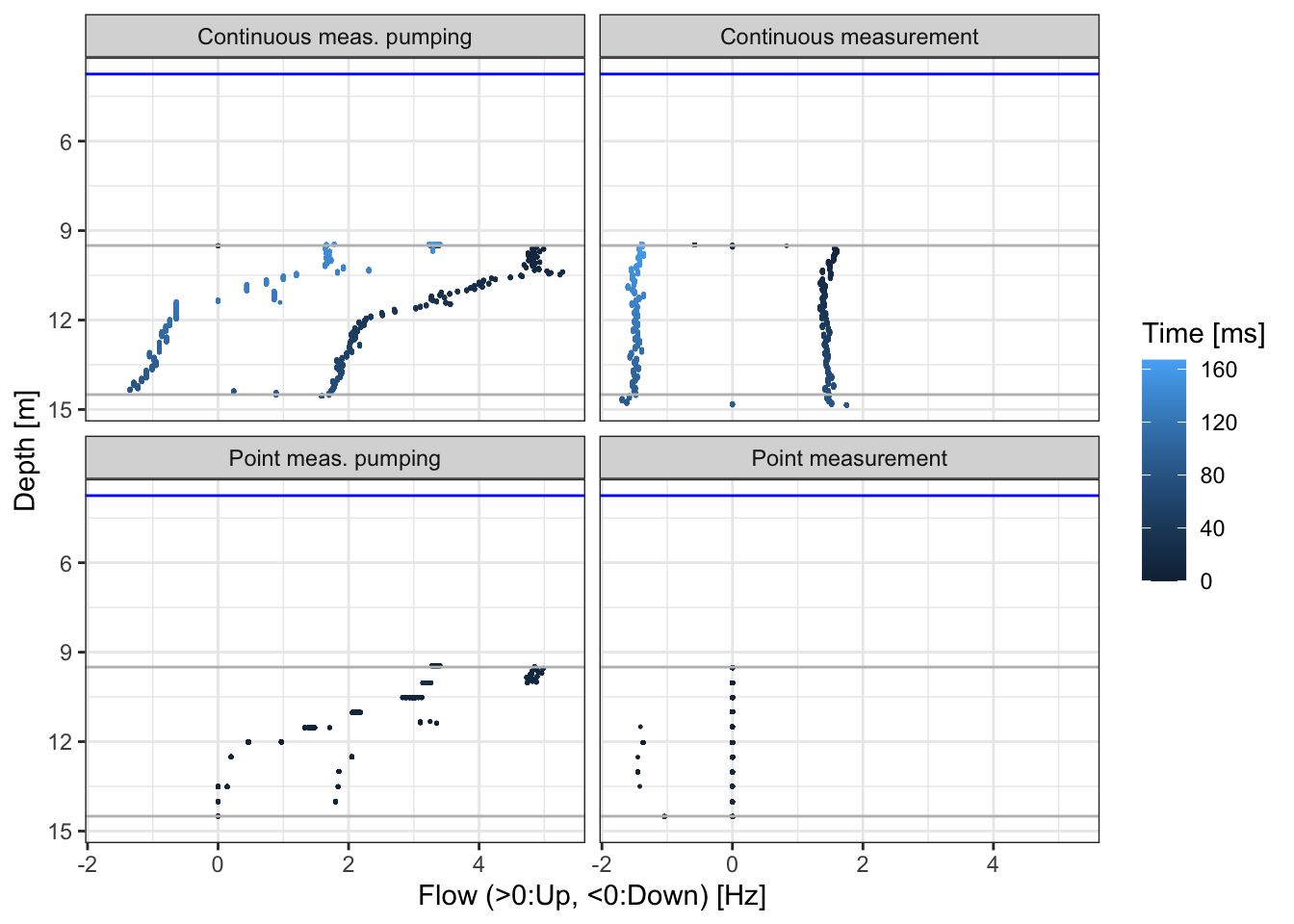
Figure 5.1: Data set of the flow meter test in borehole 6.1. cont and point indicate continuous lowering & rising of the flow meter and point measurements at defined depths respectively under non-pumping conditions.
Task 10: Evaluate flow meter test
Follow the steps in (Molz et al. 1989) to determine flow velocities and hydaulic conductivities along the borehole.
5.2 Dilution test
Figure 5.2 shows the electrical conductivity and temperature measured during a dilution test in borehole 4.2. The water in the well was mixed using a small submersible pump. 150g of NaCl was dissolved in water and the solution injected continuously into the borehole within one turn-over time, i.e. the time it takes for the water in the well to circulate through the pumps pipes. During the dilution tests, groundwater was continuously pumped from well 4.1 (for the tracer test). The data is available here.
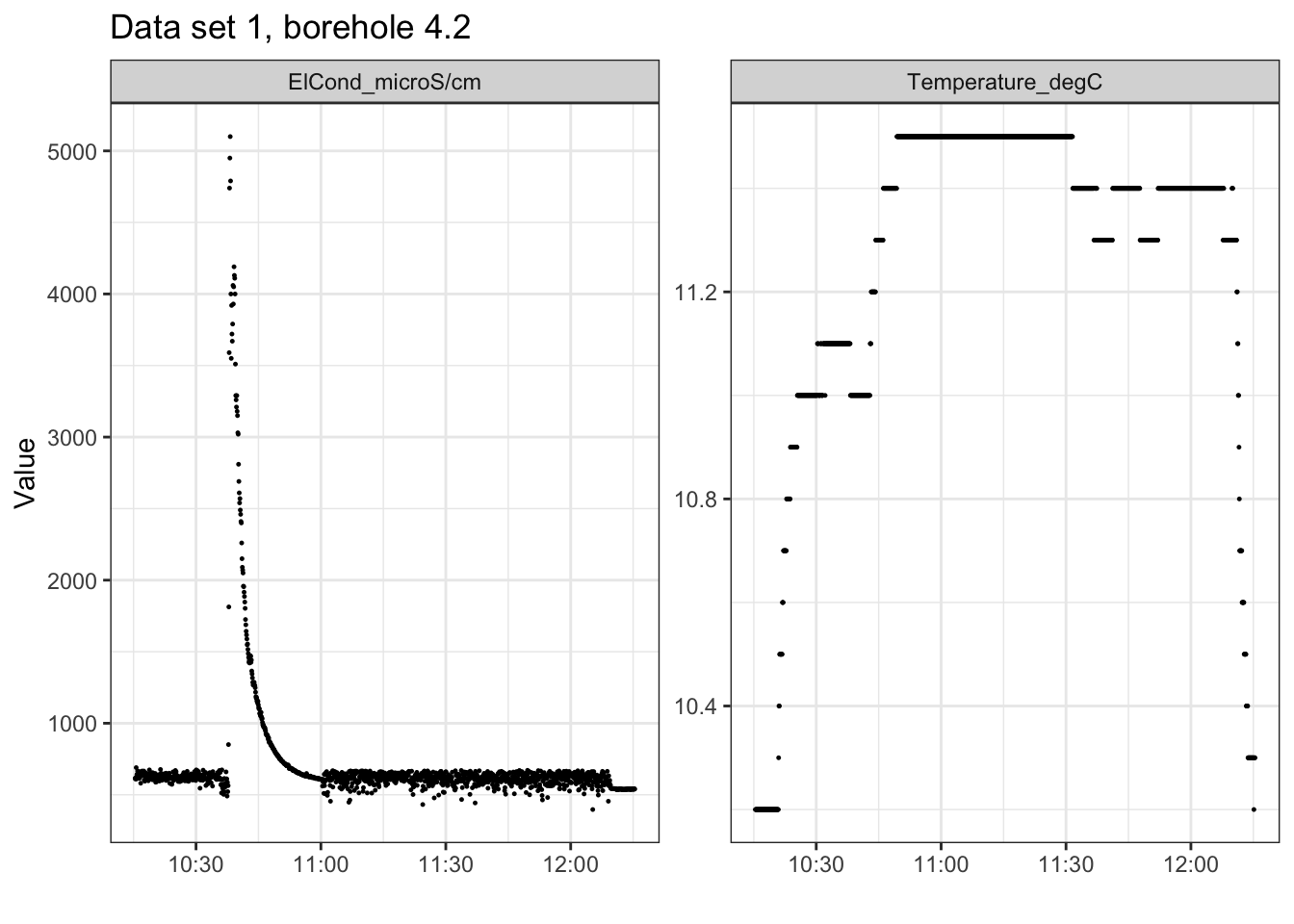
Figure 5.2: Data set 1 of the dilution test in borehole 4.2.
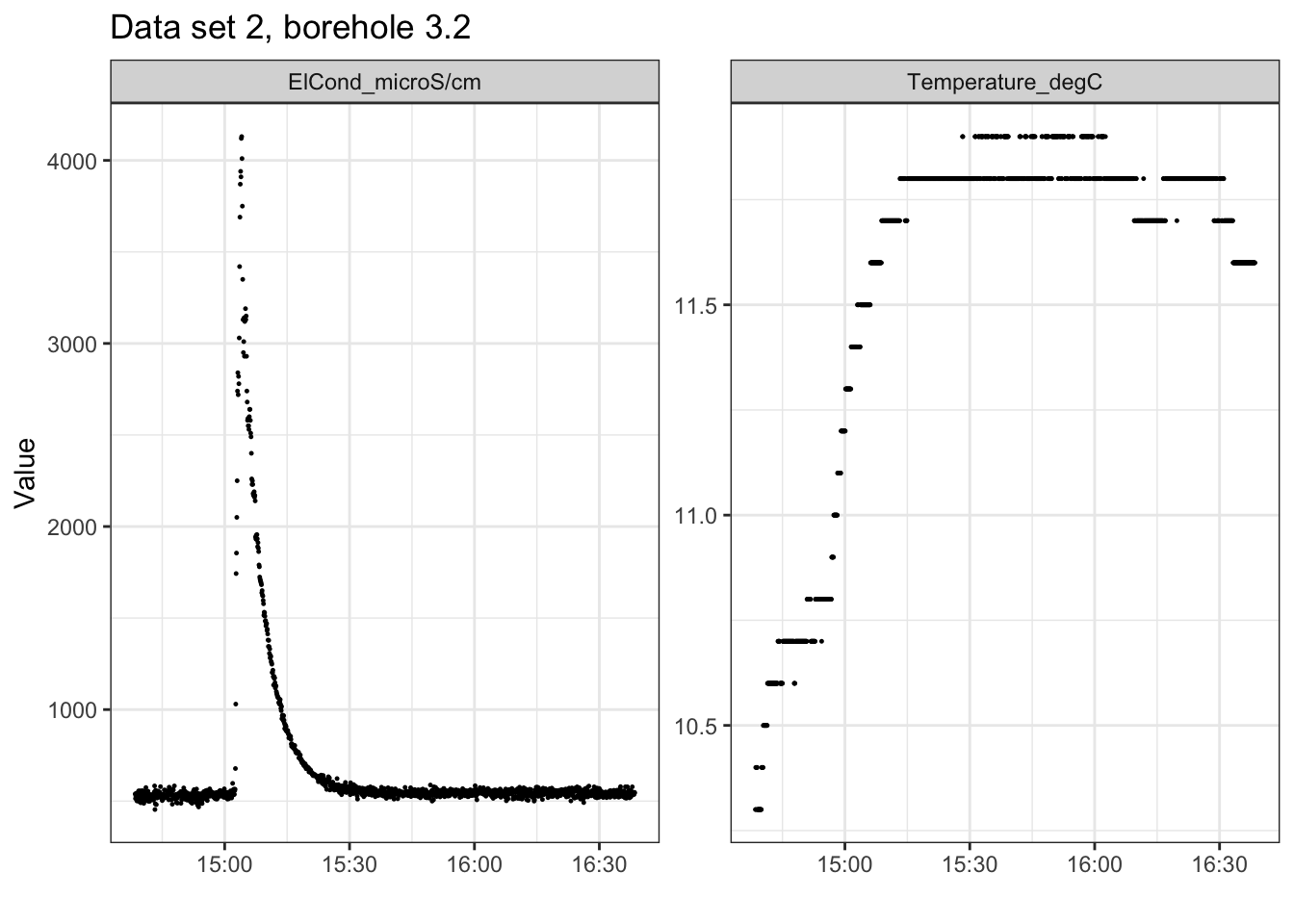
Figure 5.3: Data set 2 of the dilution test in borehole 3.2.
Task 11: Calculate Darcy velocities
Estimate the Darcy velocities based on the two break-through curves following e.g. Piccinini, Fabbri, and Pola (2016).
5.3 Slug test
Slug test data set 1 describes a slug test performed in borehole 3.1. Sensors measured pressure and temperature in boreholes 3.1 and 3.2. The volume of the cylindrical slug object is 0.013 m3. 6 slug tests were performed: 3 fast ones where the slug volume was lowered and pulled out again quickly and 3 slow ones where the slug volume was entered and pulled out over a time interval of approximately 7 seconds. The data from these 6 consecutive experiments is shown in Figure 5.4. The data is available here.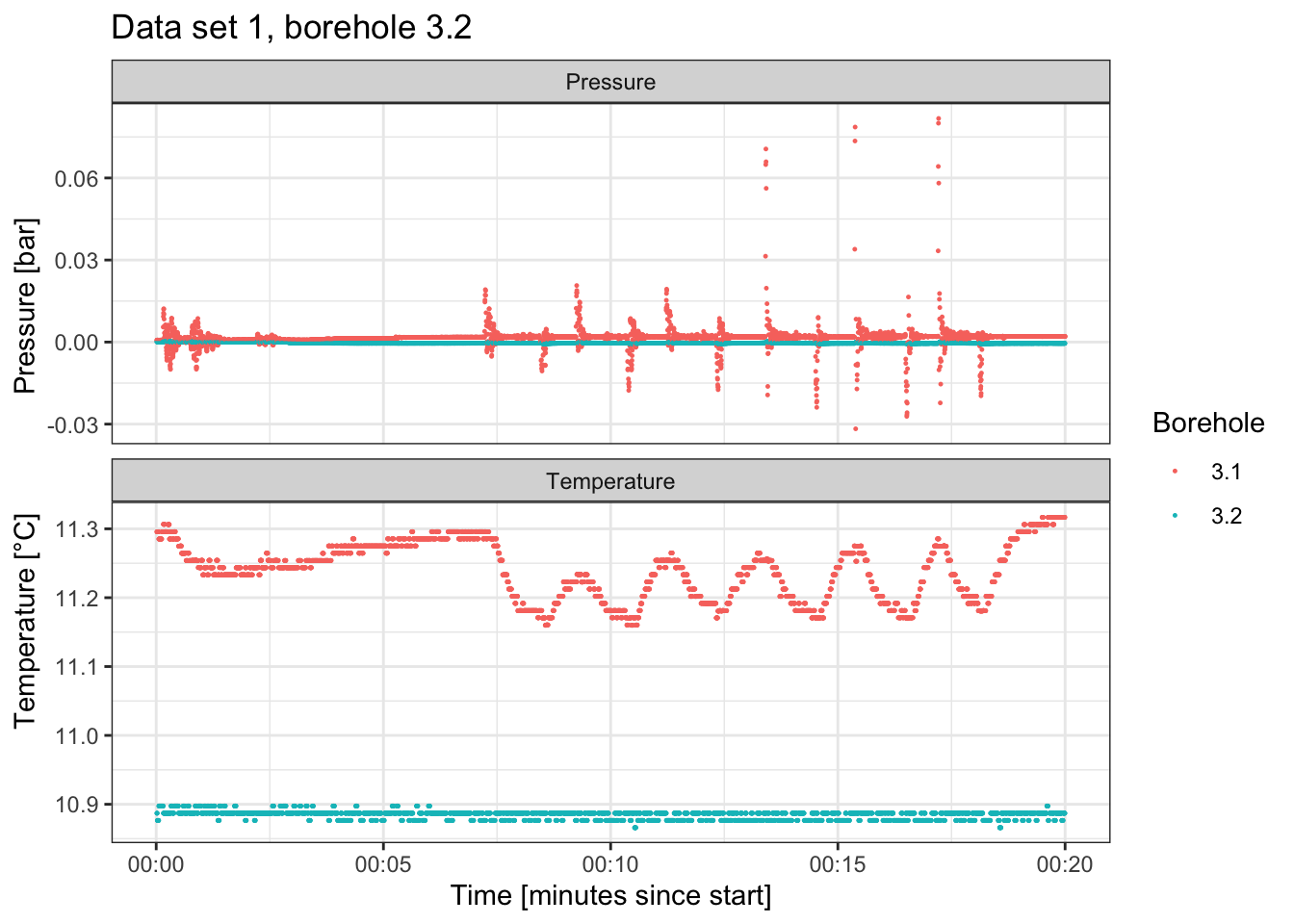
Figure 5.4: Data set 1 of the slug test in borehole 3.2.
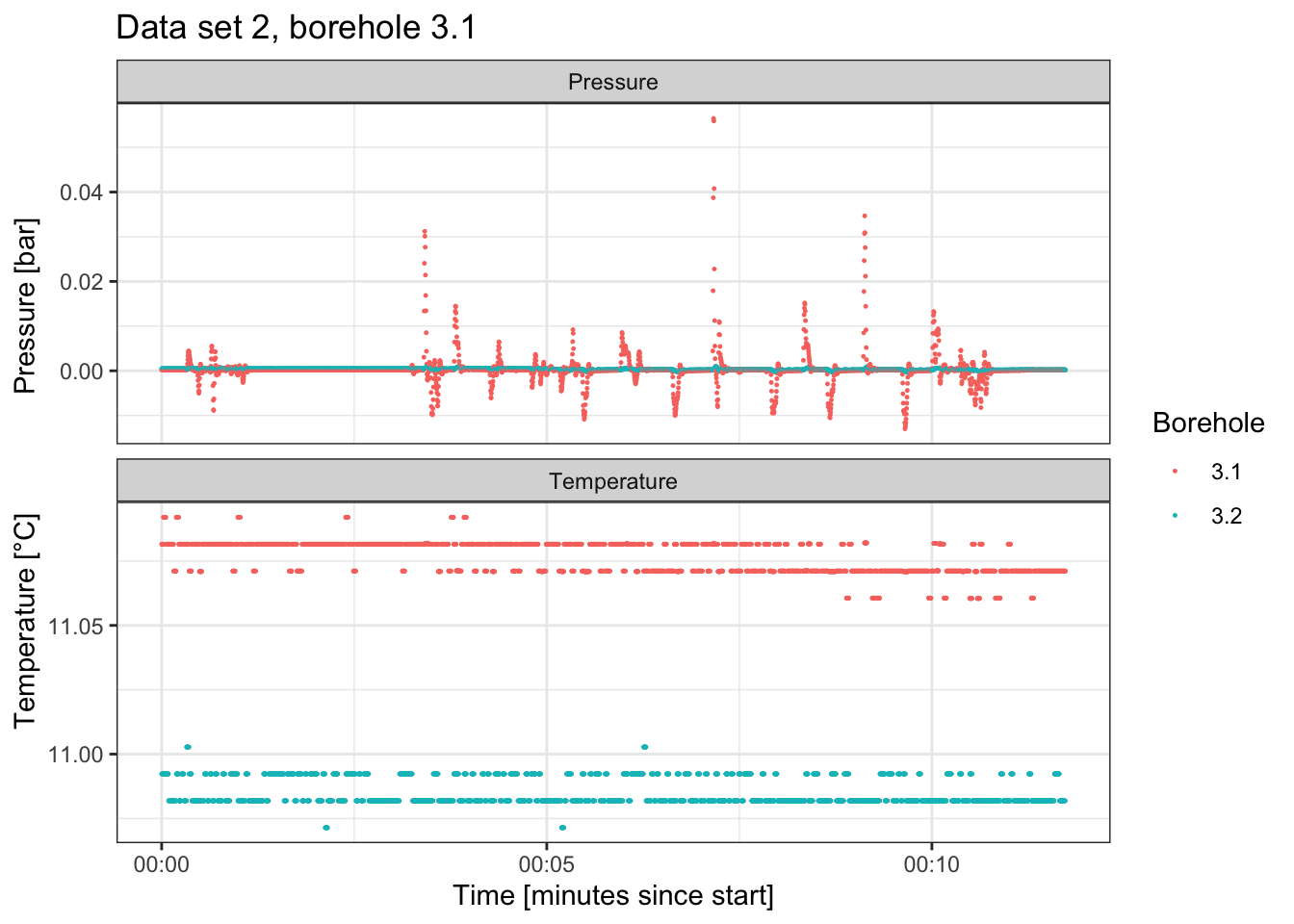
Figure 5.5: Data set 2 of the slug test in borehole 3.1.
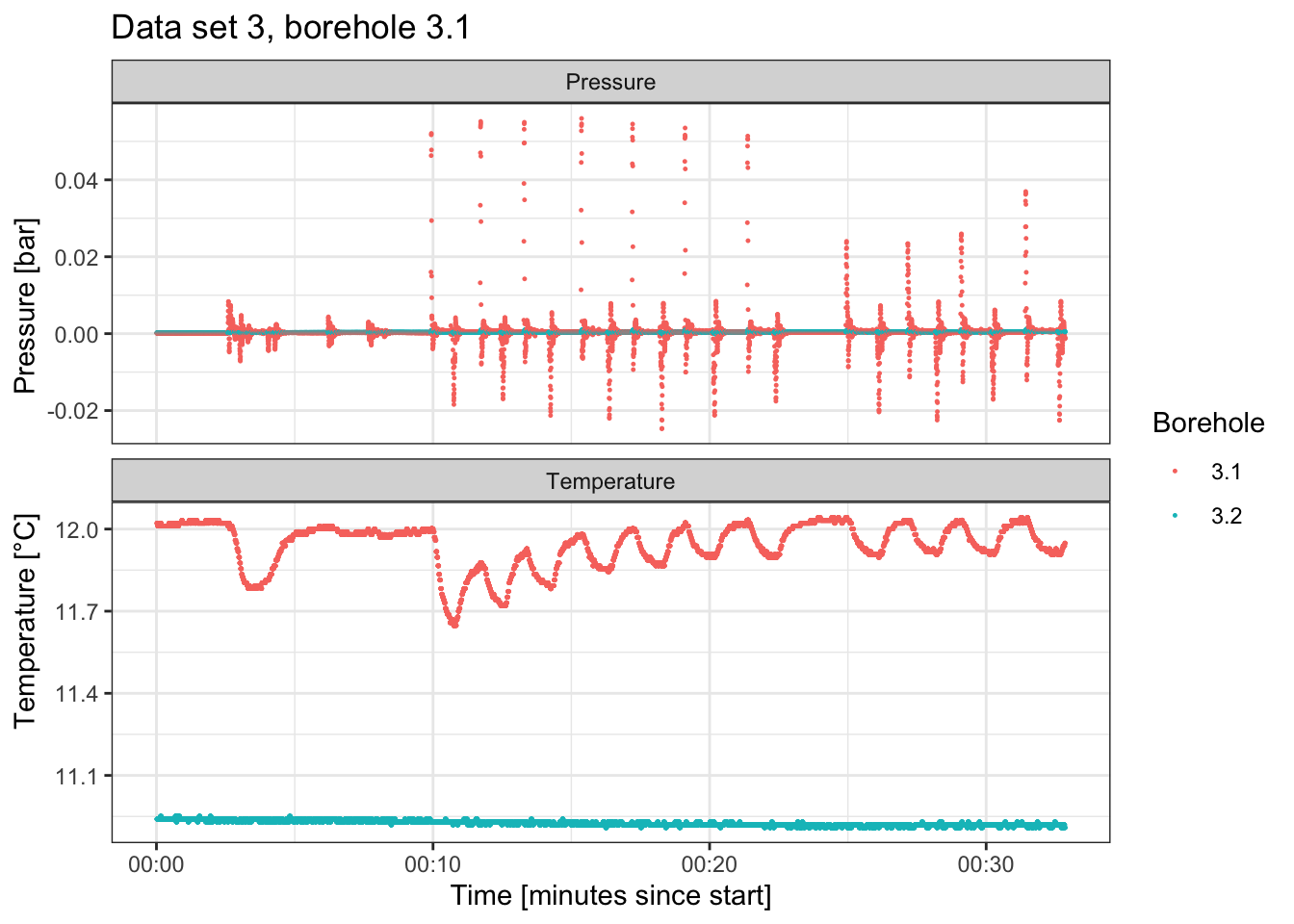
Figure 5.6: Data set 3 of the slug test in borehole 3.1.
Task 12: Estimate S and K using Cooper’s method
Choose one of the 3 data sets and estimate aquifer storativity and hydraulic conductivity sing Cooper’s method (Kruseman and de Ridder 2000).
Task 13: Estimate S and K using Butler’s method
Choose one of the 3 data sets and estimate aquifer storativity and hydraulic conductivity sing Butler’s method (Butler Jr, Garnett, and M. 2003).
5.4 Pumping test
Pressure was measured in boreholes 2.1, 2.2, 3.1, 3.2, 4.1, 4.2 and 8.1 with measurement intervals of 0.2s. Water was pumped from borehole 2.1 for 20 minutes and then turned off and recovery of the groundwater table was monitored for another 20 minutes. During the pumping test, groundwater was continuously pumped from well 4.1 for the tracer test experiment. Figure 5.7 shows an overview over the experimental setup.
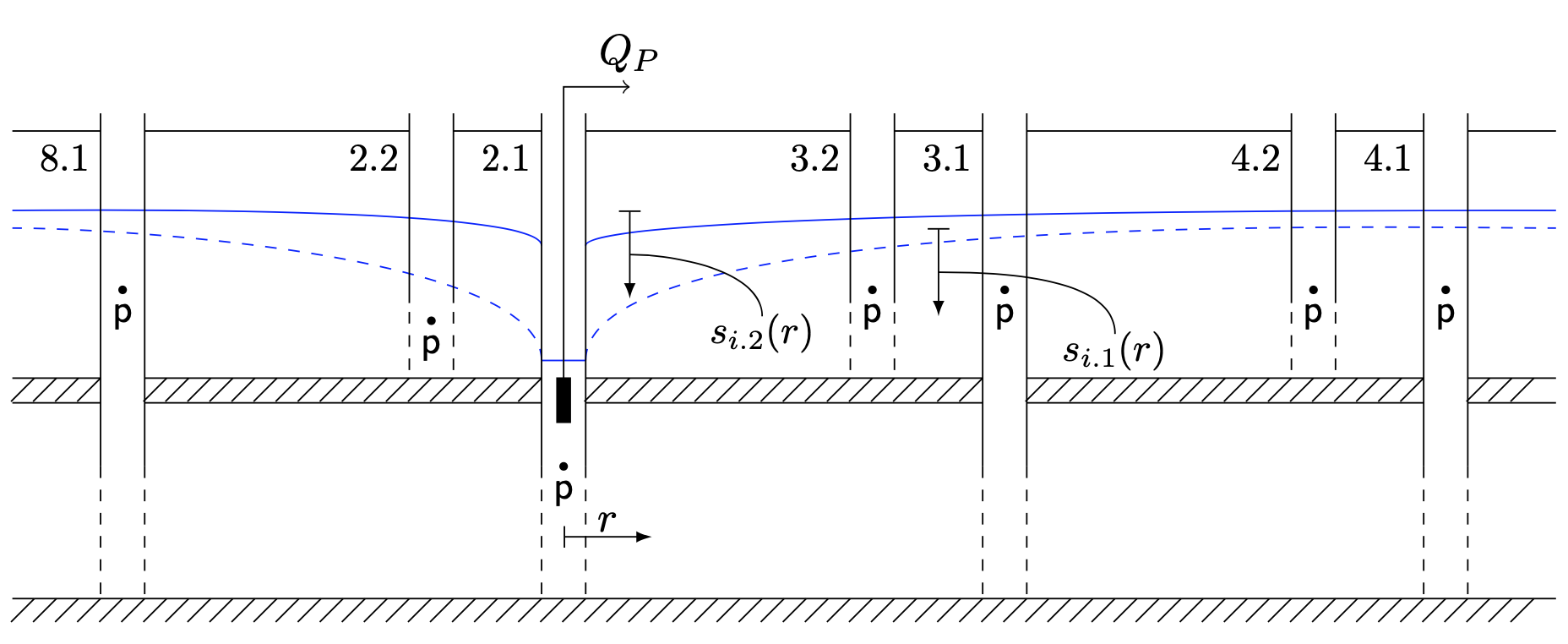
Figure 5.7: Setup of the pumping tests during field course 2019. Drawing by Baume, Gardenghi, Formakova, Huber and Cracknell.
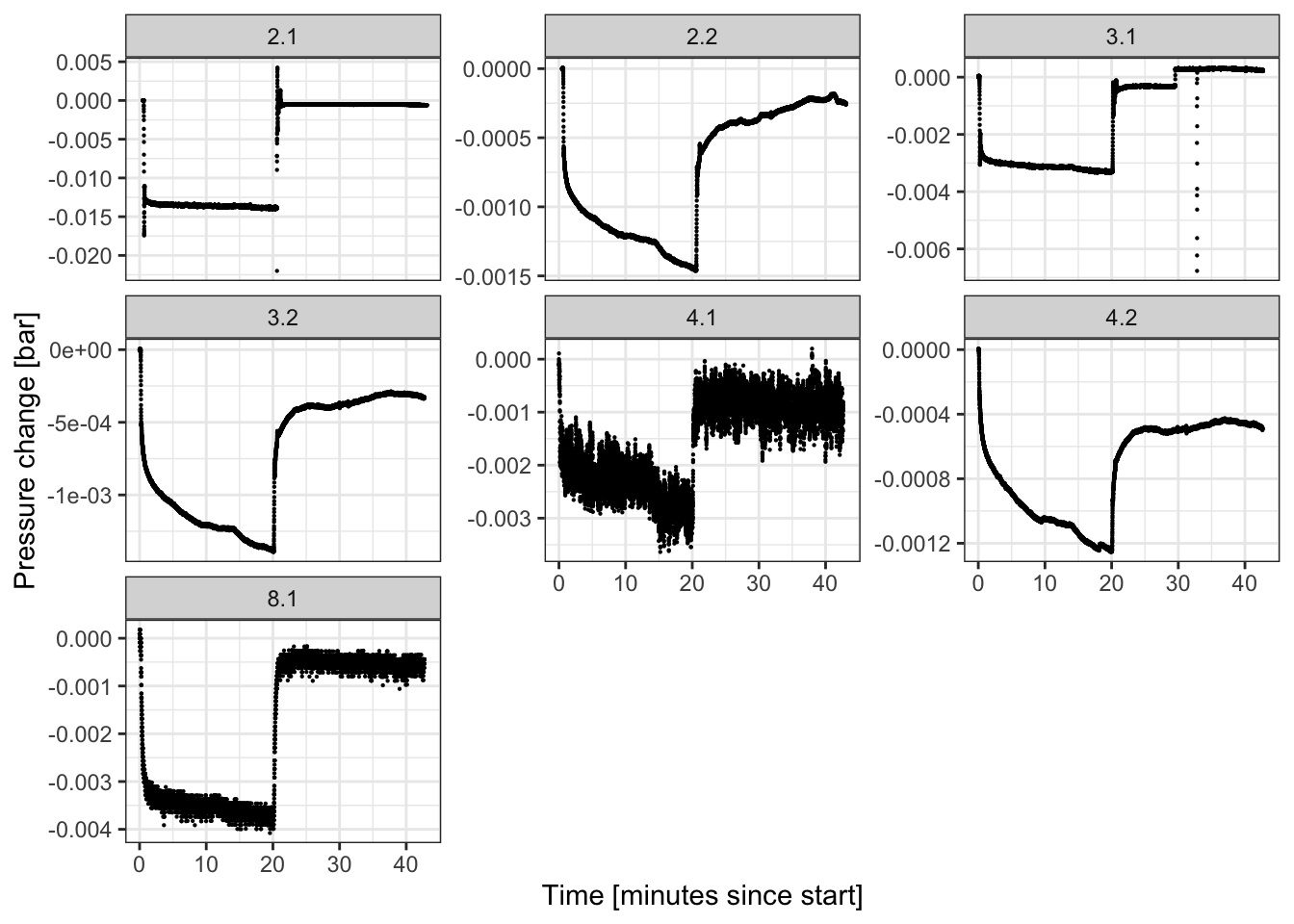
Figure 5.8: Pressure signals measured at 7 sites during the pumping test.
Task 14: Derive aquifer parameters
Estimate the aquifer parameters based on the methods by Jacob and Walton described in Kruseman and de Ridder (2000) and discuss if the aquifer is confined or unconfined in the surroundings of borehole 2.1 and if steady state conditions were reached during the pumping test.
5.5 Tracer test
The tracer tests was started on June 4th at 7p.m.. 100g of uranine tracer were diluted in 1000l of water and pumped to borehole 1.1. A pump in borehole 4.1 was running at a constant rate of 0.0052 m3/s for 3 days and uranine concentrations were sampled continuously (every 10 seconds) using a GGUN-FL Fluorometer (Schnegg and Doerfliger 1997) (Figure 5.9) and manually at a 2-3 hours interval (Figure 5.10). The data measured by the Fluorometer is available here and the calibrated concentrations from the manual uranine samples are available here.
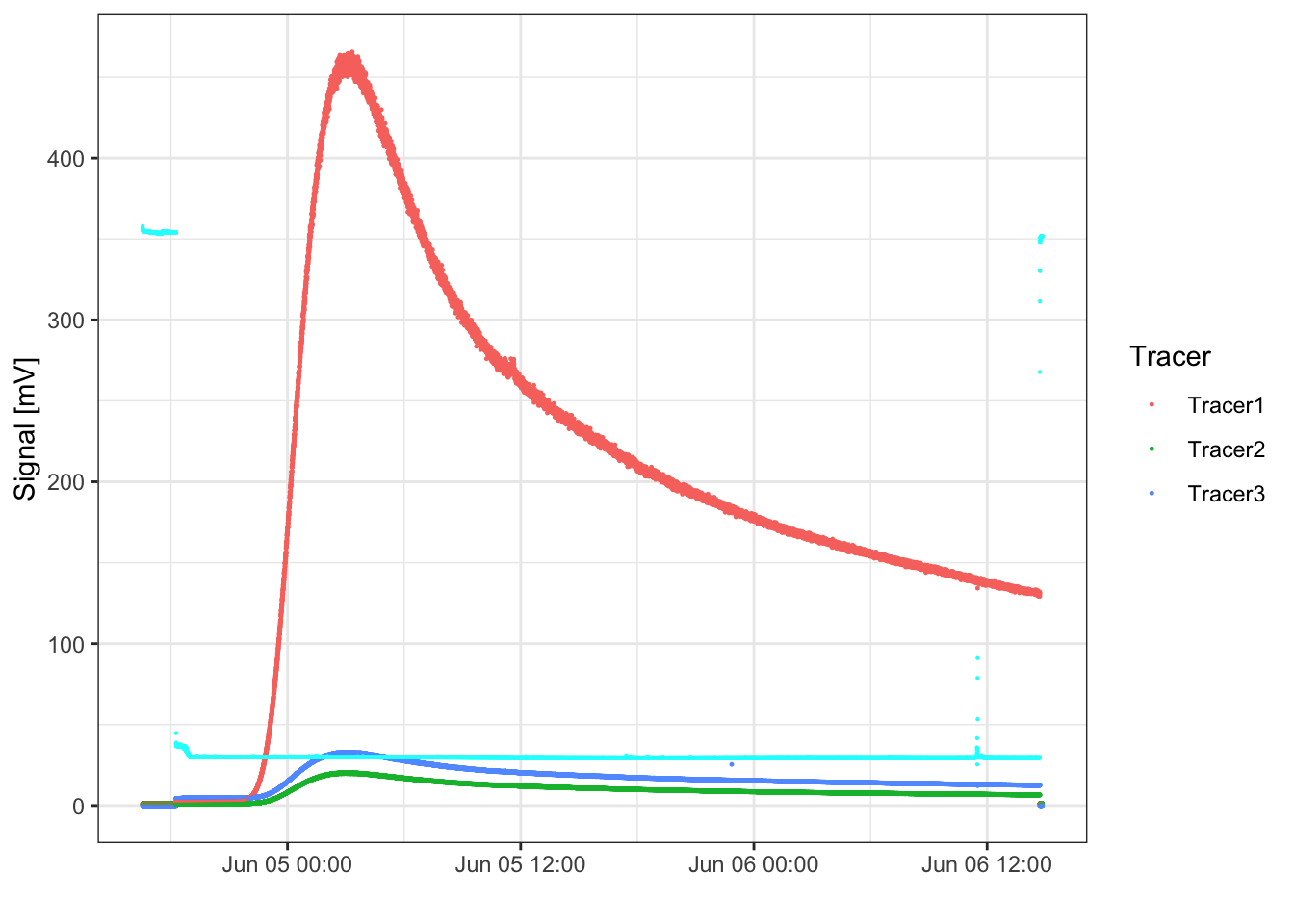
Figure 5.9: Tracer signal in measured by the GGUN-FL Fluorometer. The turbidity signal is given in cyan color.
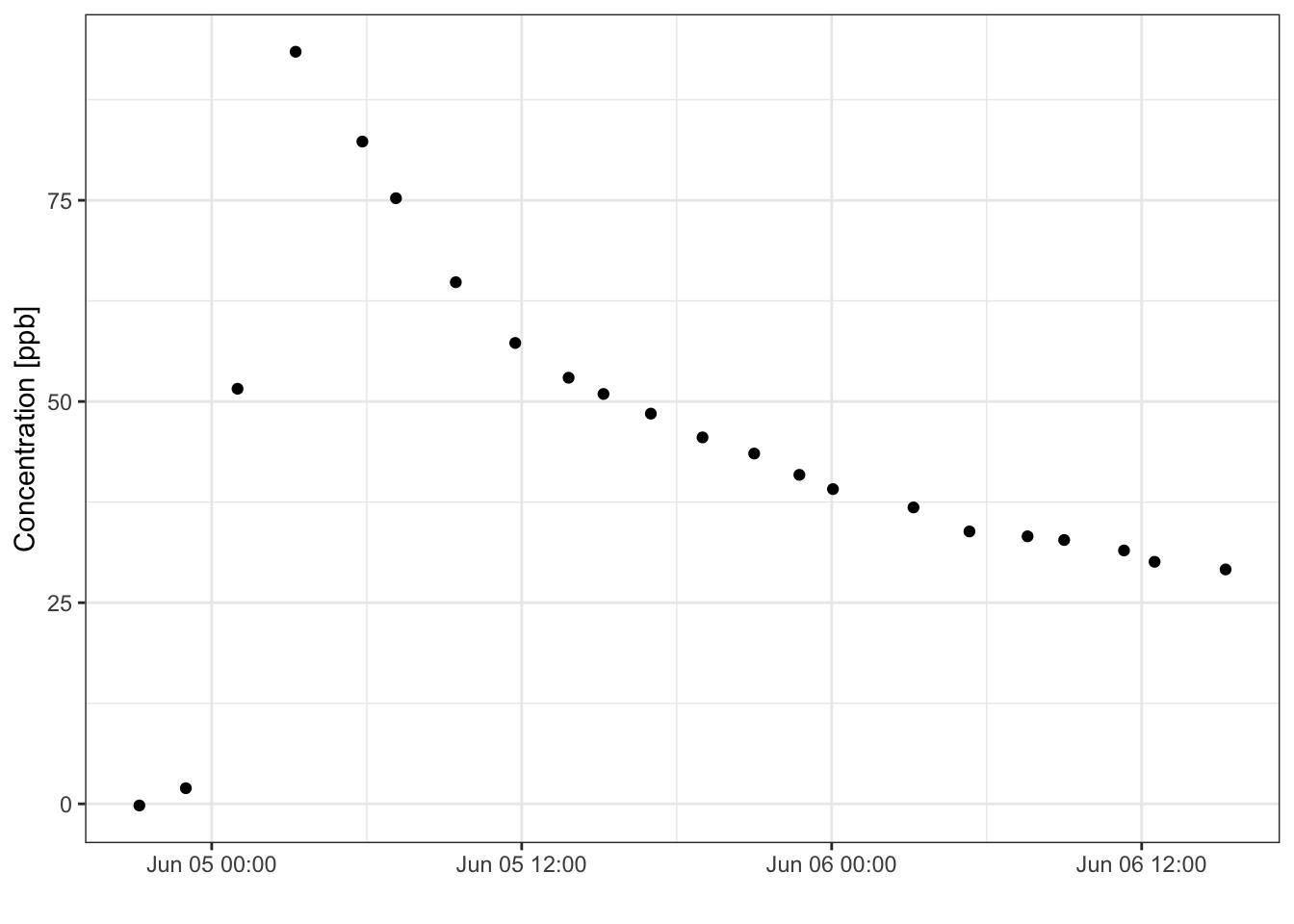
Figure 5.10: Manually measured uranine breakthrough curve at well 4.1.
Task 15: Calibrate the fluorometer data
Calibrate the fluorometer data using the calibration data provided on github and compare the two breakthrough curves. Use the fluorometer data labeled ‘Tracer 1’.
Task 16: Simulate the tracer test usind FeFlow
Task description by Andres?
References
Butler Jr, J. J., E. J Garnett, and Healey J. M. 2003. “Analysis of Slug Tests in Formations of High Hydraulic Conductivity.” Groundwater 41 (2): 620–30. https://doi.org/10.1111/j.1745-6584.2003.tb02400.x.
Kruseman, G. P, and N. A. de Ridder. 2000. Analysis and Evaluation of Pumping Test Data. Second. International Institute for Land Reclamation; Improvement.
Molz, F. J., R. H. Morin, A. E. Hess, J. G. Melville, and O. Güven. 1989. “The Impeller Meter for Measuring Aquifer Permeability Variations: Evaluation and Comparison with Other Tests.” Water Resources Research 25 (7): 1677–83. https://doi.org/10.1029/wr025i007p01677.
Piccinini, L., P. Fabbri, and M. Pola. 2016. “Point Dilution Tests to Calculate Groundwater Velocity: An Example in a Porous Aquifer in Northeast Italy.” Hydrological Sciences Journal 61 (8): 1512–23. https://doi.org/10.1080/02626667.2015.1036756.
Schnegg, P.-A., and N. Doerfliger. 1997. “An Inexpensive Flow-Through Field Fluorometer.” 6th Conference on Limestone Hydrology and Fissured Media.